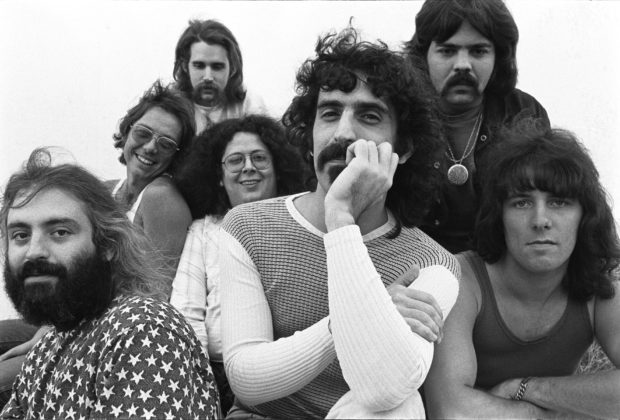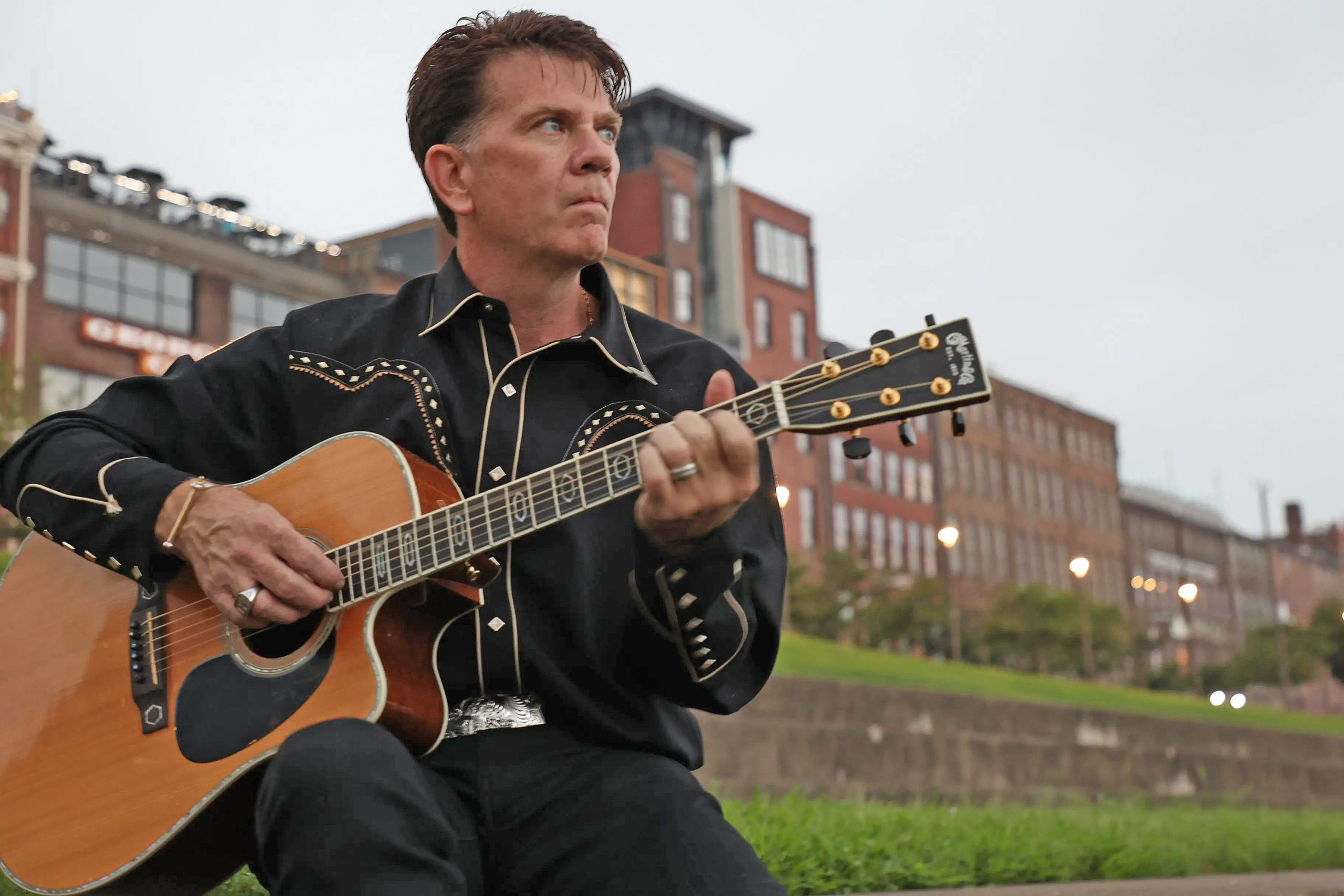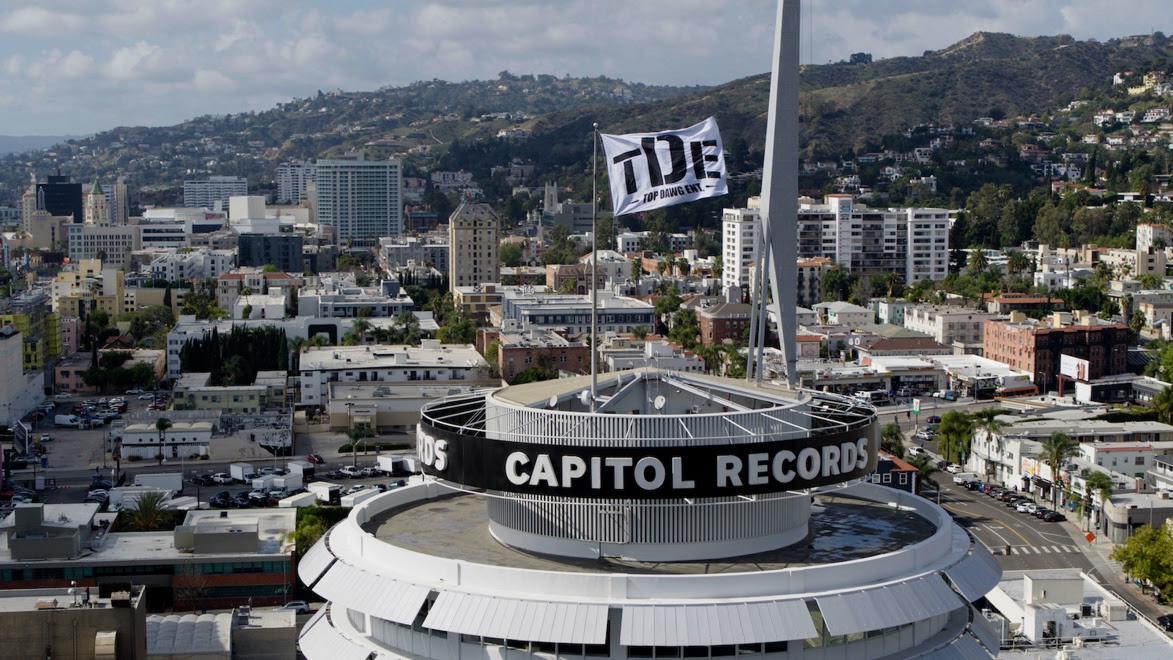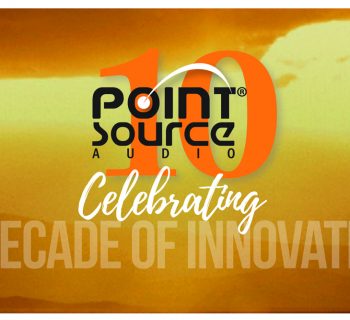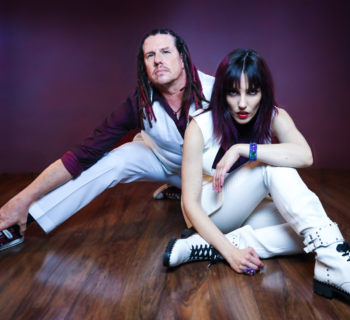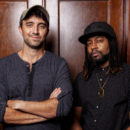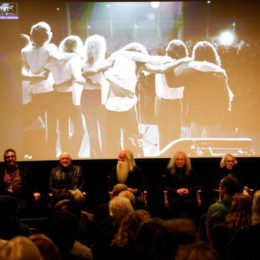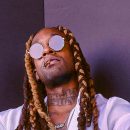Released in August 1971 just two months after it was recorded, Fillmore East - June 1971 was Frank Zappa and The Mothers’ masterstroke conceptual live album, a well-oiled and well-edited aural treatise chronicling the prurient feast and famine of a certain band’s somewhat salacious life on (and off) the road.
In effect, it was the seemly predecessor to October 1971’s expansive, groundbreaking magnum opus, 200 Motels, the surrealistic documentary and soundtrack which ultimately took on a life of its own. Even so, Fillmore East - June 1971, the landmark live recording with the scrawled “penzil” cover art made to resemble a bootleg of the day, managed to capture its own level of then-modern zeitgeist in patented Zappa-reconstructed form.
The ever-touring Mothers closed out 1971 with a European jaunt that saw them hitting Denmark, Germany, The Netherlands, and Austria before rolling into Switzerland for a December 4, 1971 show at the Montreaux Casino that will forever live in infamy in both song and legend. This was due to an errant fan setting off a flare gun and burning the place to the ground – along with destroying all The Mothers’ gear and equipment, sans one solitary cowbell.
Thankfully, the band and audience were relatively unhurt, but subsequent shows in France and Belgium were cancelled and The Mothers had to resort to wrestling with rented equipment for a planned pair of shows slated for December 10-11, 1971 at the Rainbow Theatre in London, England. Only the December 10th show came to pass, however, due to an event that changed the course of Zappa’s life forever.
After the band played a cover of The Beatles’ “I Want To Hold Your Hand,” a crazed fan attacked him by violently shoving him off the stage into the orchestra pit 12 feet below. For some time, nobody knew whether Zappa was alive and there was complete confusion inside and outside the theater.
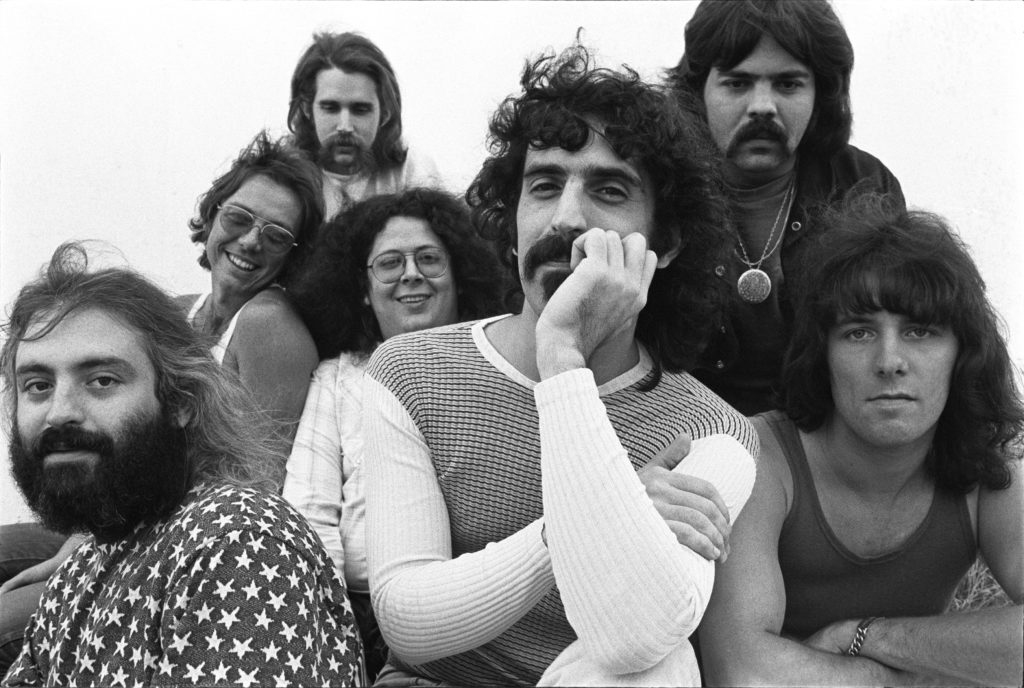
Mothers 1971-Credit Henry_Diltz (L to R Howard Kaylan, Jim Pons, Ian Underwood, Mark Volman, Frank Zappa, Bob Harris, Aynsley Dunbar
As Frank Vincent Zappa recounted in his 1989 autobiography, The Real Frank Zappa Book: “My head was over on my shoulder and my neck was bent like it was broken. I had a gash in my chin, a hole in the back of my head, a broken rib and a fractured leg. One arm was paralyzed.”
Once he could finally leave the hospital and be returned to the States, he spent the better part of a year in a wheelchair and a leg brace. When all was said and done, he permanently sustained a lower pitched voice, one leg shorter than the other and chronic back pain. The Rainbow Theatre show would end up being the last ever performed by the Flo (Mark Volman) and Eddie (Howard Kaylan) lineup as the group disbanded while Zappa was in the hospital as they needed to continue to work while he recuperated. Once Zappa recovered from his injuries he ventured into other musical territories.
It's these intriguing, intertwining roads that will be explored, examined, and celebrated like never before with the monumental new eight-disc/digital collection, The Mothers 1971, a new Super Deluxe Edition boxed set due March 18 via Zappa Records/UMe that showcases these special 1971 lineups and commemorates these storied chapters in Zappa’s legacy.
Overseen by the Zappa Trust and produced by Ahmet Zappa and Zappa Vaultmeister Joe Travers, the 100-track, nearly 10-hour set brings together every note of the fabled four shows that closed down the vaunted Fillmore East in New York City on June 5-6, 1971, including the entire John Lennon and Yoko Ono encore, along with the full Rainbow Theatre performance in London, England, on December 10, 1971.
Also included is an unreleased hybrid concert culled from June 1 and June 3, 1971 performances in Scranton and Harrisburg, Penn., which denote the first time Mothers shows were recorded on Zappa’s preferred, then-newly purchased ½-inch 4-track tape machine (throughout the ’70s, this was the main tape recorder used to document shows if the budget allowed).
The extensive collection is rounded out with the original rare single for “Tears Began To Fall” and its non-album-track B-side “Junier Mintz Boogie,” signifying the single’s first re-release in 50 years and digital debut, as well as a homemade radio spot and its related outtakes.
This retail release marks the first time the complete back-to-back double-header Fillmore East concerts have been released in their entirety, allowing fans to hear the full performances that Zappa edited the album from, and for the very first time anywhere, contains the official audio of the Rainbow Theatre show’s truly shocking ending which was thought to have not been recorded until recently discovered while putting this project together.
The Mothers 1971 will also be available digitally for streaming and download, in both standard and hi-res audio (96kHz/24-bit).
The majority of the box set’s unedited live tracks have been newly mixed from scratch by longtime Zappa Trust associate Craig Parker Adams at Winslow Ct. Studios and mastered by John Polito at Audio Mechanics. The complete historical Rainbow Theatre concert was newly mixed by legendary producer/engineer Eddie Kramer (his first Zappa Trust project to date) and mastered by Bernie Grundman. All recordings included on The Mothers 1971 were sourced from their original 2-inch, 16-track, 1-inch 8-track, and ¼-inch 2-track stereo analog master tapes discovered in The Vault and digitally transferred and compiled by Joe Travers in 2020, who then supervised the mixes in early 2021.
The Mothers 1971 boxed set comes in a CD size slim case with all eight discs residing in their own respective mini-jackets, which are collectively housed within an inner slipcase, along with a comprehensive 68-page booklet showcasing a quite revealing, in-depth interview with key Mothers 1971 band member Ian Underwood as conducted by Ahmet Zappa, in addition to separate recollections and learned musings from Eddie Kramer and then-bassist Jim Pons alongside detailed, tape-by-tape liner notes from the ever-irrepressible Joe Travers, and historical photos from photographer Henry Diltz.
The Mothers lineup that ruled the Fillmore East roost in New York City for four extraordinary sets across two back-to-back nights on June 5-6, 1971 consisted of Ian Underwood (winds/keyboards), Aynsley Dunbar (drums), Jim Pons (bass/vocals/dialog), Bob Harris (keyboards/vocals) and was rounded out by Howard Kaylan (lead vocals/dialog) and Mark Volman (lead vocals/dialog), aka Flo & Eddie of The Turtles, with special guest Don Preston.
It was a fitting Mothers collective chosen to close the renowned NYC venue, and they performed such iconic tracks like “The Mud Shark,” “Bwana Dik,” and the groupie routine labeled as “Do You Like My New Car?” (For his part, Don Preston provided Mini-Moog at Fillmore East, then rejoined The Mothers fulltime to take over for Bob Harris on keyboards and vocals for the band’s ensuing summertime dates and onward, through that December.)
The June 1971 Fillmore East finale was made even more special thanks to John Lennon and Yoko Ono appearing alongside Zappa and The Mothers to perform a final encore for the unsuspecting crowd, including a red hot version of Walter Ward's "Well" led by John on vocals (an old Beatles live favorite from the Cavern Club in Liverpool) with two solos by Zappa, a seminal reading of “King Kong” that soon enough metamorphosized into an extended jam ultimately called “Scumbag” as well as further improvisational vocal ululations from Yoko with guitar feedback by John and backing from The Mothers.
Zappa had plans to release this historical encore in its entirety after mixing it in 1971, but shelved it after John and Yoko released their own encore mixes on Side 4 of June 1972’s Sometime in New York City. Zappa eventually released his version of the encore as part of October 1992’s Compact Disc, Playground Psychotics.
After being awarded the rights to his back catalogue in the early 1980s, Zappa mulled other plans for releasing the encore, but upon inspection of the returned Fillmore East masters, it was discovered the Lennon encore tape was missing from its master tape box.
In 2021 following a request via Universal, the Lennon Estate kindly provided the Zappa Trust and UMe with a high-resolution transfer of the multi-track safety reel (which FZ had made for them in 1971), thus ensuring that, for the first time in 50 years, the full encore performance could be heard, remixed, in its entirety.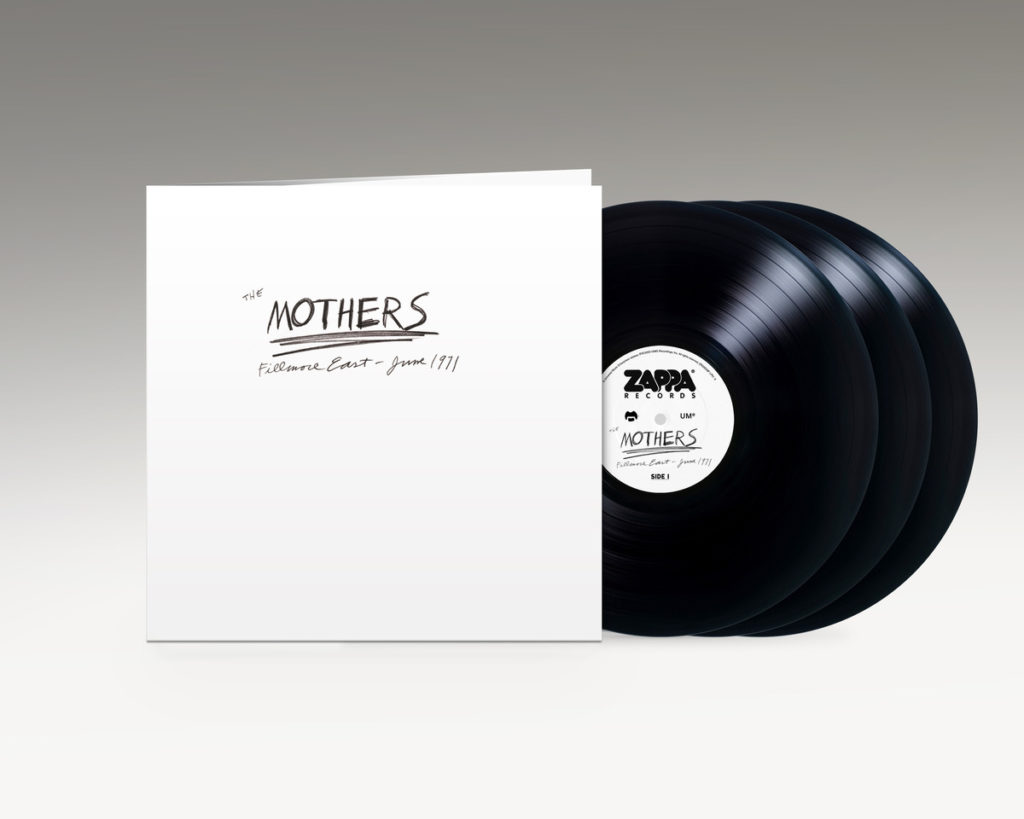
Vinyl lovers will also be able to get their fill via a pair of concurrently released individual 3LP configurations. First, the expanded 50th anniversary 3LP vinyl edition of Fillmore East – June 1971 will have a remaster of the original 1971 live album on LP1 along with 2 LPs of bonus tracks, including the John Lennon and Yoko Ono encore and the complete masterpiece “Billy The Mountain,” plus liner notes by Joe Travers.
Significantly, the vinyl version of Fillmore East has been expanded to include vintage, period-perfect Zappa mixes, some of which are not included in the CD box set and can’t be found anywhere else. The original album appears on Sides 1 and 2, while Sides 3, 4, 5, and 6 contain the original “Billy The Mountain” as well as Zappa’s original version of the John & Yoko encore along with other material from the original mix sessions of the Fillmore East album. The Fillmore East 50th Anniversary Edition 3LP set was cut by Chris Bellman at Bernie Grundman Mastering.
Second, Rainbow Theatre is the 3LP vinyl equivalent to the CD box’s contents, featuring a brand new 2021 mix and liner notes by Eddie Kramer. The Rainbow Theatre 3LP set was cut by Bernie Grundman at Bernie Grundman Mastering. Both vinyl sets were pressed on 180-gram high-grade vinyl by Optimal: Media in Germany.
As Travers keenly confirmed in his always enlightening liner notes, the Fillmore East 1971 tapes were “the first time that The Mothers were recorded live on 16-track analog tape. Previously, all live recordings were captured on 1-inch 8-track or lower.”
Barry Keene, the recording engineer for these dates, also used a ¼-inch 2-track machine to capture a line mix. Though not all of the 16-track tapes have survived over the years, Travers and company were able to utilize the 2-track board tapes to fill in any missing gaps.
In his illuminating interview with Ahmet Zappa in The Mothers 1971 booklet, Ian Underwood zeroed in on Frank’s inherent talent for writing out all his original music perfectly, note for note, a la Mozart – music Underwood was always more than happy to play for its originator. “He knew what he wanted. He didn’t have to worry about mistakes,” marveled Underwood in the Ahmet Q&A. “Frank had a clear idea and he could just write it down. That is an amazing thing to be able to do.”
For his part, bassist Jim Pons synopsized the crux of Zappa’s creative biscuit. “Frank himself always seemed carefully guarded but I found he was an astute observer of the human condition – something I really admired,” Pons wrote in his portion of the liners.
Though it all came crashing down to an untimely end, The Mothers’ masterful musicianship that was on full display during multiple critical junctures in the latter half of 1971 has now been brought together for the first time in this riveting new collection, The Mothers 1971.
The roots of the Howard Kaylan and Mark Volman teaming with Frank Zappa began after the Turtles disbanded at the end of the sixties. Kaylan and Volman then maintained their partnership, serving a five-album stint as members of Frank Zappa’s Mothers of Invention before releasing several duo albums as Flo and Eddie.
In 2013 I interviewed Howard Kaylan about his tenure with Frank Zappa and his insights into the bond he and Volman shared with Zappa.
“I worshipped We’re Only In It For The Money, one of the greatest rock records of all time,” praised Kaylan, “the cover art, too. It was better to me than the Beatles were at the time. There was a lot more content and a lot more undertone. A lot more sub-plot. A lot more ‘Wake Up America’ kind of thing.
“Whether it was real or imagined, I thought that Frank was the most brilliant writer that I had ever seen, socially, since Dylan. I loved the Beatles stuff, and not to take away from it, but this was new. I wore out copies of it. Eight-tracks. I had it every place.
“So, we get free tickets to go to UCLA to see the Mothers of Invention, the original group, Because Frank hadn’t worked with these urchins for years, he was doing all this experimental jazz stuff. We didn’t know who the new guys were. I was following Zappa’s records.
“So we go down to UCLA at Pauley Pavilion to see the reunion of this early Zappa first band with Roy Estrada, Ray Collins, Bunk and everybody new from the Garrick Theater days. And we loved it. Spectacular concert.
“We go backstage and shake everybody’s hand. Hugging all these guys we hadn’t seen in years. And Frank says, ‘How ya doin’? I hear the Turtles broke up.’ ‘How did you hear that?’ ‘Hollywood is a very small town… Lemme ask you a question. Do you guys know what you’re gonna do yet?’ Because, and he didn’t even give us a chance to answer, ‘’Cause I’m putting together a new bunch of Mothers and I want to go to Europe and I want to make a movie. What do you think?’
“We looked at each other in awe. Mark and I were so into that We’re Only In It For The Money album at the time we would have gone anywhere. We were flattered.’ ‘Tell you what. Let’s not make any decisions or hasty moves. I’m having a barbecue at my house on Sunday at 4:00. Bring your saxophones.’ He knew we played saxophones in the Cross Fires.
“So everyone is ordering burgers and Frank then motions us to go into his basement studio and has us whip out the saxophones. ‘OK. Play something.’ We hadn’t picked up these things in years. And Frank gets the gist rather quickly that he’s not dealing here with virtuosos. I think he had the thought that we could go out with a three- piece sax section and do some dissonant stuff, but the quality of our honking, I think, sort of made him have us put the saxophones away. But then, he had us sing along with a couple of things that had already been recorded. And we were on.
“He then asked us that day if we wanted to come with him for ten booked dates in Europe that would possibly lead to a movie. That he was going to be writing a movie as these dates were going on in Europe. He didn’t have a script yet but he was going to call the thing 200 Motels,” Kaylan remembered.
“The most difficult part was the first day of rehearsal in Herb Cohen’s complex on Sunset Blvd. We knew up front by jumping into this pond that anything creative that would come out of us would not be owned by us, a work for hire. It was a given. We were just thrilled for the work, let alone, mind you we were making a huge leap going from AM radio to this brand new medium FM radio that wouldn’t play us. We were discouraged from our Turtles’ history and we couldn’t use the name or references to ourselves,” reiterated Howard.
“Working with Frank was great. It was easy. I suspected it was going to be difficult where he would be a very demanding in studio producer. In fact, he was pretty easy in the studio. It amazed me knowing the product he released in the past, and Chunga’s Revenge was already earmarked to be a Zappa solo record, it wasn’t a Mothers record.
“So we already knew we had some freedom because we weren’t Mothers of Invention at this point. We were just singing on a Zappa record. On some songs like ‘Sharleena,’ we were clearly the lead guys. And we upheld, I think, the spirit of the Mothers and what Frank was trying to do. Those voices were theatrical. They weren’t the Turtles’ voices.
“These are songs that keep us in the rehearsal hall every day for 10 hours for the 2 and a half weeks before this event. Most of the songs we knew obviously from being such huge fans. But just knowing a Mothers’ song doesn’t mean anything because Frank wanted to change it, the tempo or key. It was never the same two nights running, let alone two albums in a row.”
Howard and Mark subsequently returned to the UCLA’s Pauley Pavilion venue as members of Zappa’s band, resulting in Just Another Band from L.A. It was a special homecoming for Kaylan.
“I was a student there and had a radio show as a college deejay briefly,” recalled Howard.
“I had a full 4-year ride to UCLA. Then the Turtles happened. I used to walk past Pauley Pavilion to get to class. On the school radio station, KLA, my program was called Afternoons With Howie the K. I played records I brought from home. The things at the station were basically just Top 40 crap. If they would play something around the Beatles’ Rubber Soul I would spin the B-side of the Swinging Blue Jeans’ record.
“As for the recording, there was improv on stage and between the cues of the things we had to say, you can even hear it on the record where it goes in and out, we were pretty much on our own.
“The stuff that we would say off script that would make Frank laugh, anything off book. That was the best feeling in the world. You can hear it in the recordings. Most of the stuff we did with Frank, including 200 Motels, was all done live. When you could make Frank laugh it was far better.
“As for the UCLA show, it wasn’t like I was returning triumphantly to the campus. It was just another show. I think I had deeper feelings for the shows we did at The Santa Monica Civic Auditorium. Because my parents were there and maybe the first and only time they had seen me not as a Turtle but as a Mother of Invention. It was great fun and a show I looked forward to every single night.”
Howard commented about going to England on that first trip with Zappa.
“I loved it. People were shocked when we showed up at The Bath Festival in front of hundreds of thousands of people and we were those guys. There was some advance PR, but even that was real skeptical.
“At the gig we’re at the side of the stage and we’re literally passing the shit around with the Who, Jefferson Airplane, Donovan, Yardbirds and just these unbelievable bands. And some of these guys we had known from The Turtles days. I’m watching the folklore take place that would later be turned into a script that later Frank would take credit for writing. (laughs). You know, and realizing, of course, that was part of the deal and that you were giving that stuff away.
“Once the British thing was over and realized we were going full speed ahead, we went right back into the rehearsal hall and we started prepping for a much longer segment European tour that took us all over the place. Mostly doing the stuff that would turn up on 1971 Live Fillmore East album. But a lot of the older stuff, the medleys Frank would make up. ‘Call Any Vegetable.’
“Frank would listen back to every show he recorded. Iwas kind of shocked that he went as far as using the song. But I’m glad they did, especially because that record came out at a funny time in relationship to 200 Motels.
‘The 200 Motels movie was to have ended with ‘Happy Together.’ That whole business about the groupies, and where you staying out by the airport and all that stuff were to have taken place in a custom built car The Tinsel Cock car that was actually constructed on the Pinewood set. You can see that car in the featurette that Frank produced The True Story of 200 Motels. That really tells a much more complete story that you can ever read about that.”
Kaylan provides further observations about playing with Frank on stage.
“All I can tell you is that it was the best. It was like being on stage in some sort of dream- state half the time. Even when you weren’t thinking about your vocalizations, you couldn’t slide through a Mothers’ show, had to be on your toes 100 per cent, when you were on, then Frank was, or George was or Ian was or Aynsley (Dunbar) was. One of the greatest rock bands ever assembled.
“So you stood there as a performer. But when you stepped back out of the spotlight, you’re jaw hit the ground. Frank tops the list of all guitarists, from Jeff Beck to Jimmy Page on down. A lot of kids and musicians really need to hear Frank play guitar.
“Certainly once we joined the band I have no problem looking at Frank Zappa as a huge father figure in my life. I don’t think that anybody who ever worked with the man, instead of for the man, would say anything different. He was a very patient man and a saintly figure, even though he would hate that description. And certainly it only applies to morals that he set for himself. When it came to outside world morals Frank lived by a different code.”
Their involvement with this Zappa-lead band unfortunately ended after an incident at the Rainbow Theater in London. That event had followed an earlier fire in Montreaux, Switzerland which burned the Mothers of Inventions’ equipment. A scene chronicled in Deep Purple’s “Smoke On The Water.”
Howard Kaylan had seen it all in the music business. But he probably hadn’t witnessed this sort of horror incident before at the Rainbow gig where an audience member ran up and pushed Zappa off the stage and he landed into the orchestra pit breaking his leg and rendering him unconscious.
“No man, we thought he was dead,” confessed Kaylan. “That’s all there was too it. He was The Lodger. I’ve never seen a body that bent. I’m watching the violence and listening to the crowd. Kind of like one of those moments when the sound leaves you and it gets all hollow and it turns into slow motion. You’re not hearing anything except your heart beating and it sounds like you’re swimming. And that kind of bull shit. I wasn’t thinking at all. We were ushered off the stage by the people at the theater and we weren’t allowed to look into the pit as they took him away.
“And we didn’t hear from anybody for many weeks after. And we felt very guilty, because after the earlier Montreaux fire, Frank had wanted to go home. And it was only us day players, we the people in the band that got paid by the show, said, ‘Listen Frank. It’s easy for you to say. You’re making all the money off the records. And you can go home without the equipment. And that’s fine. But we’re canceling two weeks of shows in the United Kingdom, Ireland and Scotland. 14 shows that we’re missing, on account of the equipment. You have this bad feeling? Bull shit. Let’s press on.’
“Had we not borrowed equipment from the Who and Led Zeppelin to play that Rainbow Theater show we would have gone home. There wouldn’t have been a British tour. There wouldn’t have been any of these things and Frank wouldn’t have had this tragic accident and maybe the band would have continued on the way it was. I will never know.
“All I know is that when Frank was recuperating somebody had his ear so that when he came back to consciousness it was never a question the band would be back together again. There would be no band. He made that perfectly clear. I read it,” Kaylan mused.
“I didn’t hear it from anyone. The next band would be Zappa. But Frank was going to be in a wheelchair for a year, that he was going more towards his jazz roots and not be so pop-oriented. We were brought in to be pop-oriented.”
I further asked about his role with Zappa in live performances and impact on his life.
“Well for me, it wasn’t so much we did on stage it was his demeanor off stage that made him paternal to me. On stage he was a band leader and we were guys for hire. The fact that we got away with improve only meant we were smart enough to know when to get out of a bit in time for the music to come in. That’s what Frank respected.
“You could go off book as long as you got right back. No beats were lost and something was added. If you added something to the routine it was always appreciated and repeated if you could on a nightly basis or made to be part of the folk lore in some way. If it was not appreciated, Frank would let you know right on stage in no uncertain terms that this was not the time nor the place for that kind of thing. And later you would discuss it with him. It wouldn’t be a slap on the hand parent kind of talk. It would be very familial, more brotherly than paternal, but something that I never had before, which was an older figure that I respected respecting me back. The only other older figures in my life had been agents and managers who pretty much lied to me,” underlined Kaylan.
“After the show, when everybody else eschewed talking music particularly, and got together with the abject point of not discussing the show in any way, shape or form, because it would taint the next performance, Frank wasn’t like that. Frank wanted to discuss the show. Not so much the musical part of it. To find out why things worked and why things didn’t. He was very curious. Discussing what worked and why it worked and the social implications of it. So that he could stay on top of the pop music when we were brought into the band anyway, stay on top of the pop music side of things, because Frank couldn’t. Or wouldn’t. I mean, it didn’t interest him. What interested him was the public’s reaction.
“You take it in as an anthropologist and re-cycle it. But you really don’t want to listen to it. You just want to understand why it’s a phenomenon, so that’s what Frank was. He was very much Margaret Mead of his generation,” summarized Kaylan.
Howard revealed why the Turtles’ “Happy Together” became part of the Zappa repertoire and captured on Fillmore East-June 1971. 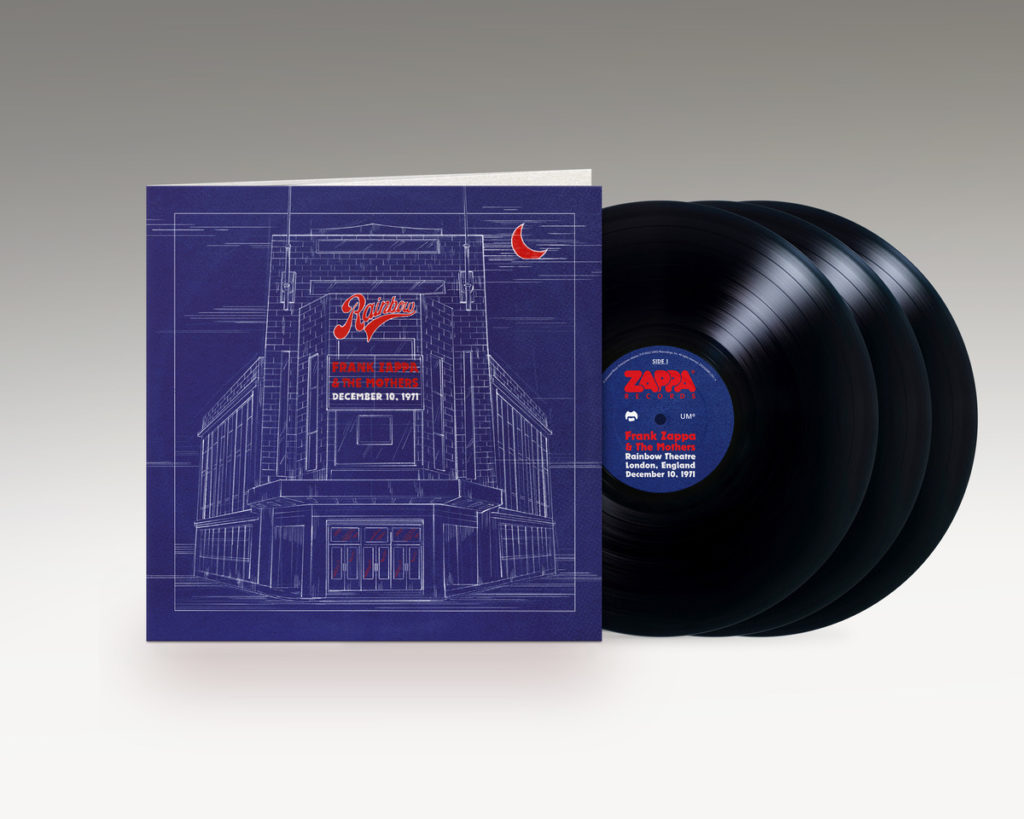
“We were trading stories about girls, because that’s what we did. This was a real story that happened to me and it was after some show where I had gone to a bar. I then met a girl and she asked me what I did for a living. ‘Oh yeah, I recognize you. My God! You’re the guy from the group. Where are you staying?’
“I told her and took her back to the room. Before I could do anything heinous to her, she said, ‘You know, I don’t think I can go all the way with you unless you sing me ‘Happy Together.’ ‘Cause I just melt when I hear it...’
“’Come on, baby, you know, I’m down to like third base here.’ And she held out… Sure enough, I sing the opening line, ‘Imagine me and you I do…’
“There comes a time when the blue balls win,” admitted Howard. “And it worked. And that night it won. So I told the story to Frank and he cracked up. ‘That sounds like something that would happen.’ ‘It did happen!’”
In 2013 I interviewed Mark Volman about Frank Zappa.
“I was a big fan of Frank early on. Howard and I from the Turtles were around the Freak Out recording sessions and we later saw Frank and the Mothers of Invention in New York City in 1967 when Frank and that band had a residency at the Garrick Theatre. We were invited to Frank’s apartment in New York after one of the shows.
“After a Frank Zappa UCLA show in 1970, we were asked backstage. Frank then invited us that weekend to a barbecue at the Zappa’s house. We brought our families. Frank told us to bring our saxophones. He took us downstairs to the ‘dungeon of horror’ and played some music for Howard and me. He quickly saw that we were not sax players.
“He said, ‘Look, we’re going over to England for eight shows. How would you like to come along and sing?’ We also did some US shows and recorded with him for the first time a piece of music that came out on Chunga’s Revenge. We did some other songs in the studio with Frank including ‘Rudy Wants To BuyYez A Drink’ and ‘Would You Go All The Way?’
“Frank was a Mother but we were Turtles,” explained Volman, “and he always wanted to know about our experiences. He thought we were stars. To him, the Turtles were like the Beatles. ‘What was that like?’ We told him a story about groupies; how these girls would do anything we wanted sexually if we would just sing ‘Happy Together’ for them. With that story began a two year relationship culminating in the motion picture, 200 Motels. Frank let us go through a litany of Los Angeles things that were in the live Fillmore East album.
“We were singing the praises of one of the greatest cities in the world. Like Frank, we were Los Angeles children. 200 Motels becomes the embodiment of our time with Frank. And we did Just Another Band From LA with him.
“After Chunga’s Revenge, we had what I used to call, ‘studio survival sessions,’ which is music he had recorded live and then we would work on it in the studio and clean it up. Some of those recordings were taped in concert. He recorded every show we did for over 2 years. Rehearsing with Frank was scary. He was the embodiment of a union man. There was never a time for fun. Putting together ‘Billy the Mountain’ was a series of vignettes that connected around a 43 minute opera.
“Howard and I usually started with Frank on guitar, the three of us, and we were given the music to learn. Frank felt most comfortable playing and singing the melody so there are very few times where Frank placed himself into the four-part harmony or three-part harmony. He kind of left that to Howard, Jim Pons, and me. We’d take the bit and show up at the rehearsal hall on Highland Avenue and lead the band through what he wanted.
“Once the British thing was over and we realized we were going full speed ahead, we went right back into the rehearsal hall and started prepping for a much longer segment European tour that took us all over the place. Mostly doing the stuff that would turn up on 1971 Live Fillmore East album. But a lot of the older stuff, the medleys Frank would make up. And it wasn’t just power, it was just a mastery,” marveled Mark.
During 2008, Volman and I discussed Zappa and he provided recollections on the original Fillmore East-June 1971 album, soon to be celebrated with an upcoming anniversary edition.
Portions of our conversation initially appeared in my 2009 book, Canyon of Dreams: The Magic and the Music of Laurel Canyon.
“I was part of some of the most traumatic parts of Frank Zappa’s life: The Rainbow Theatre in London, where he was thrown off the stage; the fire at Montreux, Switzerland in 1971,” lamented Volman.
“He took Howard and me from being boys to being men. He led us from our B.A. program, which was the Turtles, into our Master’s program, where we got our degree in comedy, improv, and experimenting vocally in ways we were never allowed to do. And when we were turned loose as Flo & Eddie, we got our PHD’s.
“And then, to be with him two weeks before he died, and knowing it was going to be the last time I would see him again…I’ll never, ever recover. I miss him so much. And I remember Frank, and I’ve never told anybody this, I remember him laying there and reaching out to me and he put his hands on me and said, ‘I just want you to know how great it was to have you guys singing with me.’ And I wanted to say, ‘Shut the fuck up!’ And then he said, ‘I want you to tell your partner that he was just the best singer that I ever had.’ I said to him, ‘You know what? You tell him. I can’t tell him. You’re gonna have to be around just a little bit longer ‘cause I don’t want to be the bearer of any bad news, and I’m not gonna do that…’
“Frank never worried about what impact he had,” Volman stressed. “He never worried about what reviewers thought of him. He was constantly working. Frank was not like any rock person I knew. He didn’t go out to the movies; he didn’t go to Starbucks; he wasn’t pining for attention like every other star,” reinforced Mark.
“He felt best when he was at home in Laurel Canyon. He was there to sleep, he was there to write, and he was there to raise a family. He was there to have a relationship with his wife Gail. He didn’t need to go anywhere. Frank and Gail were like trees in Laurel Canyon. They embodied the spirit of what Hollywood music was during that time period.”
Harvey Kubernik witnessed Southern California area concerts by both the Turtles and Frank Zappa during 1966-1969.
Kubernik is the author of 20 books. Kubernik also authored 2009’s Canyon Of Dreams: The Magic And The Music Of Laurel Canyon and 2014’s Turn Up The Radio! Rock, Pop and Roll In Los Angeles 1956-1972.
Sterling/Barnes and Noble in 2018 published Harvey and Kenneth Kubernik’s The Story Of The Band: From Big Pink To The Last Waltz. For November 2021 the duo wrote Jimi Hendrix: Voodoo Child for Sterling/Barnes and Noble.
Otherworld Cottage Industries in 2020 published Harvey’s book, Docs That Rock, Music That Matters, featuring interviews with D.A. Pennebaker, Chris Hegedus, Albert Maysles, Murray Lerner, Morgan Neville, Dr. James Cushing, Curtis Hanson, Michael Lindsay-Hogg, Andrew Loog Oldham, Dick Clark, Ray Manzarek, John Densmore, Robby Krieger, Travis Pike, Allan Arkush, and David Leaf.
Kubernik’s writings are in several book anthologies, Most notably The Rolling Stone Book Of The Beats and Drinking With Bukowski.
Harvey wrote liner note booklets to the CD re-releases of Carole King’s Tapestry, Allen Ginsberg’s Kaddish, Elvis Presley The ’68 Comeback Special and The Ramones’ End of the Century).
During 2020 Harvey Kubernik served as a Consultant on the well-received 2-part documentary Laurel Canyon: A Place in Time directed by Alison Ellwood.

